If you are carrying a big chunk of credit card debt and are having difficulties paying it off, a 0% or low-rate balance transfer credit card can help you get back on your feet again.
Credit card debt is tough to deal with. Each day that goes by signals an increase in your debt obligations as the interest fees continue to pile up and your minimum payments hardly touch the principal. Simply put, the struggle can be real!
Read on to learn about the best balance transfer credit cards in Canada and how to consolidate your credit card debt, incur lower interest fees, and pay down your debt faster.
Best Balance Transfer Credit Cards in Canada
Here are the best low-rate balance transfer cards in Canada right now.
1. Tangerine Money-Back Credit Card
- Annual fee: $0
- Balance transfer offer: 1.95% for 6 months
- Balance transfer fee: 1%
- Standard interest rate: 19.95%
- Income requirement: $12,000
The Tangerine Cash Back Mastercard is a no-fee card that offers unlimited cash back on your everyday purchases and a 1.95% promotional balance transfer rate for 6 months.
A 3% balance transfer fee applies to each of your balance transfer amounts. After the promotional rate period ends, a 19.95% interest rate kicks in.
The Tangerine Money-Back Card offers many other benefits:
- 2% cash back in up to three categories of spending, including groceries, gas, drugstore, entertainment, hotel/motel, recurring bill payments and more.
- 10% promotional cash back for a limited time ($100 value).
- 0.50% cash back on all other purchases.
- Purchase protection and extended warranty.
Read my Tangerine Money-Back Card review.
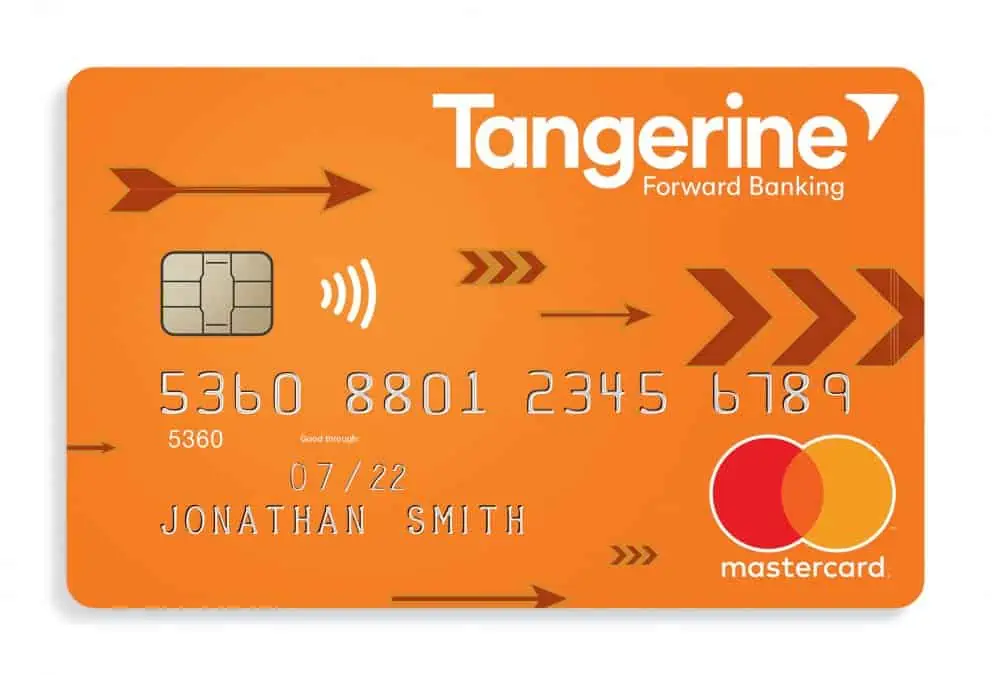
2. Scotiabank Value Visa
- Annual fee: $29 (waived in the first year)
- Balance transfer offer: 0.00% for 10 months
- Balance transfer fee: 1%
- Standard interest rate: 12.99%
- Income requirement: $12,000
The Scotiabank Value Visa card is Scotiabank’s popular balance transfer card and offers a 0.00% interest rate for ten months.
After the promotional period ends, a 12.99% rate applies to purchases, cash advances, and balance transfers.
Interestingly, the Scotiabank Value Visa only has a low 1% balance transfer fee during the promotional period, which makes it even more attractive.
Cardholders can get up to a 25% discount on car rentals at participating Budget and AVIS locations.
Scotiabank also offers Scotia SelectPay, where purchases over $100 can be paid for in monthly installments with no interest rates and low fees.
This credit card comes with no insurance coverage, but you can choose to add Scotia Credit Card Protection for an additional fee.
Read my complete review of the Scotiabank Value Visa card.
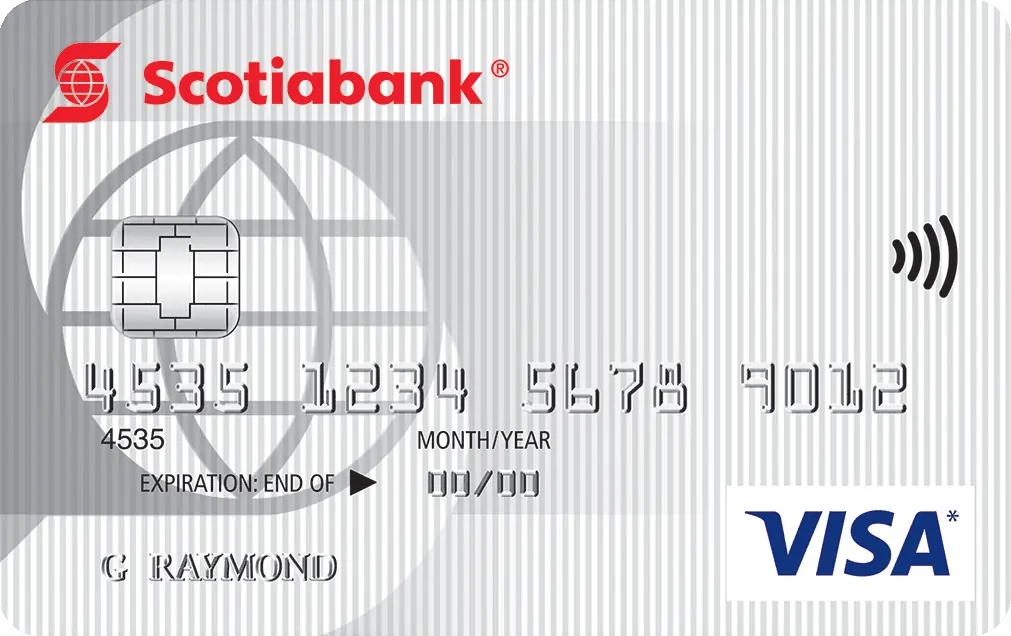
3. MBNA True Line Mastercard
- Annual fee: $0
- Balance transfer offer: 0% for 12 months
- Balance transfer fee: 3%
- Standard interest rate: 12.99% purchases and 24.99% cash advances
The MBNA True Line Mastercard recently re-introduced its 0% promotional balance transfer offer for 12 months. A 3% balance transfer fee applies.
After the promotional period, the balance transfer rate goes up to 12.99%.
This no-annual-fee credit card also offers up to a 10% discount at Avis Rent A Car and Budget Rent A Car.
You can take advantage of the MBNA Payment Plan, where you can pay for purchases over $100 in a 6, 12, or 18-month term.
Read my complete MBNA True Line Mastercard review.
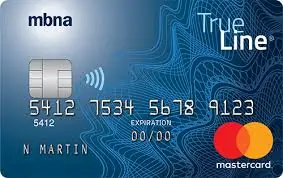
4. BMO Cash Back Mastercard
- Annual fee: $0
- Balance transfer offer: 0.99% introductory rate for 9 months
- Balance transfer fee: 2%
- Standard interest rate: 20.99% purchases and 22.99% cash advances
The BMO Cash Back Mastercard is a top-rated card that combines cash back offers with a low balance transfer rate of 0.99% for 9 months. A 2% balance transfer fee applies.
After the promotional period, the balance transfer rate goes up to 22.99%.
Other benefits of this card are:
- Earn 3% back on groceries, 1% back on recurring bills and 0.50% back on everything else (The 3% and 1% cash back offers are limited to a maximum of $500 spending per month per category)
- Redeem cash back for a statement credit, deposit it into your BMO chequing or savings account, or put it into your InvestorLine account
- Purchase protection and extended warranty
- Get a 25% discount at National Car Rental and Alamo Rent A Car locations
- Get 15% to 20% off admission to Cirque du Soleil shows in Canada and Las Vegas
Read my complete BMO Cash Back Mastercard review.
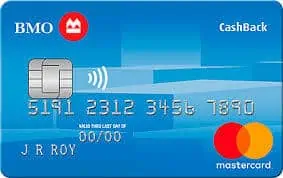
5. BMO AIR MILES Mastercard
- Annual fee: $0
- Balance transfer offer: 0.99% for nine months
- Balance transfer fee: 2%
- Standard interest rate: 20.99% purchases and 22.99% cash advances
- Income requirement: $15,000
The BMO Air Miles Mastercard is great for collecting Air Miles while also saving on interest fees. It offers 0.99% balance transfers for nine months, and after the promotional period ends, a 22.99% rate applies.
Also, expect to pay up to 2% in balance transfer fees.
Other benefits of the BMO Air Miles Mastercard:
- Earn 3 Miles for every $25 spent at participating Air miles locations
- Earn 2 Miles for every $25 spent at eligible grocery stores
- Collect twice the Miles at participating retailers when you use this credit card and show your Air Miles card
- Extended warranty and purchase protection
- Get up to a 25% discount when you rent a car at participating Alamo Rent A Car and National Car Rental locations
- Get up to 20% off admission to Cirque du Soleil shows
Read this BMO Air Miles Mastercard review for more details.
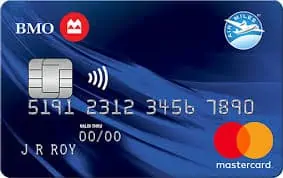
Methodology:
Savvy New Canadians rates the best balance transfer credit cards based on their annual fees, interest rates, rewards, top features, insurance coverage, welcome bonuses, and other perks. We carefully evaluate each credit card and place more weight on the value of the long-term rewards it offers. Only credit cards we would personally use are recommended. While these credit cards are some of the best on the market, but may not be suitable for you. Visit the credit card issuer’s website using the links to confirm each product’s terms and conditions before applying.
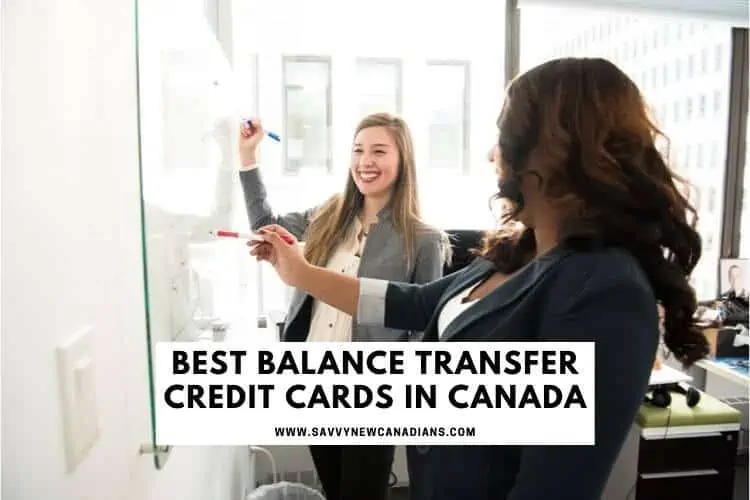
Best Balance Transfer Credit Cards in Canada Summary
| Credit Card | Balance Transfer Rate/Rewards | Annual Fee | Balance Transfer Fee | Purchase APR |
| Tangerine Money-Back Credit Card | 1.95% for 6 months Up to 2% in cash back | $0 | 1% | 19.95% |
| MBNA True Line Mastercard | 0% for 12 months | $0 | 3% | 12.99% |
| Scotia Value Visa Card | 0% for 10 months | $29 | 1% | 12.99% |
| BMO Air Miles Mastercard | 0.99% for 9 months Earn Air Miles | $0 | 2% | 20.99% |
| BMO CashBack Mastercard | 0.99% for 9 months 1% cash back | $0 | 2% | 20.99% |
What is a Balance Transfer Credit Card?
What does a balance transfer mean?
A balance transfer credit card is a card that allows you to move your outstanding high-interest balance from other credit cards to it at a lower or 0% interest rate.
It is not only credit card debt you can transfer. Balance transfer cards may allow you to consolidate other personal loans and lines of credit as well.
The low-rate offer on balance transfer cards is only available for a promotional period…usually from 6-12 months.
While 0% balance transfer offers are plentiful in the U.S., in Canada, they are rare. The best offers available here range anywhere from 0% to 3.99%.
A balance transfer can save you hundreds of dollars in interest payments. For example, a 0% interest vs. the regular 19.99% for 6 months or longer.
How To Choose a Balance Transfer Credit Card
As with all things credit, you should always read the fine print. Here are some of the factors to consider before getting a balance transfer credit card:
1. Balance Transfer Rate: What is the introductory rate being offered? A 0% rate is best when it is available. Compared to the standard 19.99% APR or more on most cards, any offers in the 0% to 3.99% range may be worth your while.
2. Length of Promotional Period: The longer the length of the interest-free period, the better. A perfect scenario is one where you can pay off your entire balance during the promotional period. Note that the regular interest rate rises back to normal after the promo ends. Ensure the regular rate is not higher than usual.
3. Balance Transfer Fees: Check if the card issuer levies a balance transfer fee. This fee is anywhere from 1-3%. Assuming a 3% fee, a $10,000 transfer then becomes $10,300.
4. Annual Fees and Other Benefits: Does the balance transfer card come with an annual fee? If it does, are the benefits worth the cost? Check if the card offers any rewards, e.g. travel insurance, cash back, purchase protection, extended warranty, etc.
5. Consider Your Credit Score: Most of the best balance transfer credit cards offer lower interest rates and better perks if you have a good to excellent credit score. If you don’t, you can apply for a balance transfer credit card for poor credit, although you won’t get much in terms of rewards.
6. Welcome Bonuses: Some balance transfer cards offer welcome bonuses, like a promotional lower interest rate or the opportunity to earn more points or cash back if you spend a certain amount within the first few months.
Consider all your options and choose the credit card that will give you the best value. If you can, try paying off your balance within the promotional introductory period, when you’ll pay little to no interest.
How To Use a Balance Transfer Card
If you use your balance transfer card smartly, you can save a lot of money that would otherwise have gone towards paying high-interest fees during the balance transfer promotional period.
Here are some things to keep in mind:
1) Pay off your balance fast: Use the promotional period to pay down your credit card balance as fast as possible before the interest rate goes back up.
2) Stop spending and keep paying: Any new purchases on your card are subject to the standard purchase APR. Focus on paying down your balance and avoid accruing new debt.
If you need to make purchases with a credit card, take a look at these low-interest rate credit cards.
3) Beware of the small print: Balance transfer cards generally penalize you for late payments by jacking up your rates. If you miss your minimum payment, your interest rate can rise from 0% to as high as 20% or more immediately.
When it comes to credit cards in general, missing your minimum payment is a bad idea and will ding your credit score.
A balance transfer credit card can help you improve your credit profile over time if you can pay off your debt faster.
What Are the Fees on a Balance Transfer Credit Card?
There are various fees you should consider when using a balance transfer credit card.
The first and most important is the balance transfer fee itself. Most credit card providers will charge you a fee when you transfer your money. This will usually be between 1% and 3% of the total amount you transfer.
If you have a large balance, choosing a balance transfer card with a lower transfer fee may be a good idea to save even more money.
Many cards charge an annual fee, so check whether this applies to your new card. You may also find that there is no fee for the first year only.
You also need to consider the APR. While not a fee, the interest rate will impact how much you end up spending in total.
Even though you may be paying a low-interest rate or no interest on your balance transfer, the APR for regular purchases is likely to be high, just like any other credit card.
Also, remember that the rate will usually differ depending on whether you make regular purchases or cash advances.
Other fees may be associated with the card, including late fees and inactivity fees. Make sure you find out about all the fees before you apply for your new card.
How Much Can You Save with a Balance Transfer Credit Card?
When you transfer your balance to another credit card, you may be able to make significant savings.
If you switch from a high-interest rate to a low-interest rate, you could save hundreds of dollars, depending on the amount you transfer and your previous interest rate.
Let’s say you have a standard credit card with an APR of 23.99% and a $4,000 balance to pay off.
You transfer it to a new credit card with 0% interest for the first 12 months and decide to pay off $500 a month.
On the regular card with the higher interest rate, it would take you nine months to pay it off, and you would pay $449.71 in interest.
On the new card with interest, it would take eight months to pay off your balance, and you would only pay the transfer fee. At 1% of $4,000, this would be $40.
This would give you a total saving of $409.71.
| Standard Credit Card | Balance Transfer Credit Card | |
| Balance | $4,000 | $4,000 |
| Interest Rate | 23.99% | 0% |
| Balance Transfer Fee | $0 | $40 |
| Monthly Payment | $400 | $400 |
| Time to Pay Off Balance | 9 months | 8 months |
| Interest and Fees | $449.71 | $40 |
How to Complete a Balance Transfer?
Making a balance transfer is relatively straightforward. However, the process will depend on the card issuer and the bank you are transferring from.
- First, choose your card. Look through the cards in this guide and find one suitable for you.
- Apply for the card. You may find that the issuer can set the balance transfer up automatically.
- If the process does not happen automatically, you may be able to request the transfer online or by calling the issuer and asking them to sort it out for you.
- Initiate the balance transfer request with your new provider for the card or cards you want to transfer over.
- You will need to provide the information for your old card or cards and tell them how much you want to transfer.
Then, simply wait for the transfer to take place. It may be a few days or weeks. Meanwhile, make payments on your old cards until the transfer is confirmed.
Once the transfer has gone through, you can start paying it off at a lower interest rate.
Find out how long any interest-free periods last before you apply. If you want to pay off your entire debt, work out how long it will take to pay it off without paying any interest and what your monthly payment will need to be.
Also, remember that normal purchases are usually charged at a higher interest rate. Therefore, if you are using a balance transfer credit card, it is often best to avoid using it for other purchases until you have paid off your balance.
Alternatives to Using a Balance Transfer Credit Card
You may have already decided that a balance transfer credit card is a good option, but you can also consider other options. Some alternatives may or may not be more suitable, depending on your situation.
- Get a personal loan. You will pay higher interest rates, but if you can offer some collateral like a car, it could be less expensive.
- Get a home equity line of credit (HELOC) to borrow from your home and only pay interest on the money you borrow.
- Mortgage refinance is another option if you own a property, where you can withdraw from your home equity. Or you might consider a second mortgage, which gives you more flexibility.
While none of these are interest-free, considering all your options before applying for a new credit card is always a good idea.
How to Apply for a Balance Transfer Credit Card in Canada
If you decide that a balance transfer credit card is the right option, the first step is to choose the right card for your situation.
Use the cards included in this guide as a starting point. Then, go over each and look into them in more detail to find out about the requirements, including contact information, residential status, income, etc.
You should also compare the interest rates for different cards. Do some quick calculations to determine how long it will take to pay off your balance and how much you will pay, including interest and fees. Spend some time on this to find the right solution for your situation.
You may want to check your credit score at Equifax or TransUnion before applying for your new card. This can give you a better idea of whether you will likely get approved.
Once you have chosen a suitable card, apply for it online. During the application process, you will need to provide your personal information. You may also be able to request your balance transfer at the same time. If so, provide details of your account and the debt you want to transfer.
After you have applied for the credit card, you simply need to wait to be approved. The time this takes will depend on the card in question.
Pros of Balance Transfer Credit Cards
Before you apply for a balance transfer credit card, it’s a good idea to consider the benefits.
- Using a balance transfer credit card can reduce your interest. When you switch, you either pay no interest or a low rate, so you could save money instantly.
- You may be able to pay off your principal balance sooner with a transfer credit card. If you are not paying any interest, you can make regular monthly payments to pay off your debt. This reduces the amount of debt faster, and paying it off becomes quicker.
- Depending on the card you choose, you may find there is no annual fee, giving you a way to save even more money.
- You may be able to earn rewards for purchases in addition to the lower interest rate.
- You may be able to combine various credit card debts into one to consolidate your debt and make it more manageable.
Cons of Balance Transfer Credit Cards
Before you apply for a balance transfer credit card, it’s a good idea to consider the downsides.
- The standard interest rate will be used if you make new purchases on your card. As you pay off your card, your payments will go towards paying off the debt with the lowest interest first, so you will be accruing interest if you spend on the card.
- There are fees involved. Balance transfer fees are usually charged, as are annual fees. While the savings made on interest can still be worth it, be aware of the fees before you apply for a card.
- There may be a limit on the amount you can transfer, so keep this in mind.
- You may have to pay the revert interest rate if you miss any payments. Always be careful to ensure you make payments on time.
- If you carry a high balance and don’t make regular monthly payments, your credit score will be damaged, making it harder to qualify for a balance transfer card.
Does a Balance Transfer Credit Card Hurt Your Credit Score?
When you apply for a new credit card, the issuer will make a hard inquiry on your credit report. This can affect your score, so it’s not a good idea to apply for lots of credit cards in a short period.
However, the dip is usually only temporary. If you are approved for the card and start making regular monthly payments on time, your score should recover.
Apart from that, there are no negative impacts on your credit score. The fact that you are using a balance transfer does not look bad. The only problem is if you don’t make your payments on time, which can hurt your score.
Related:
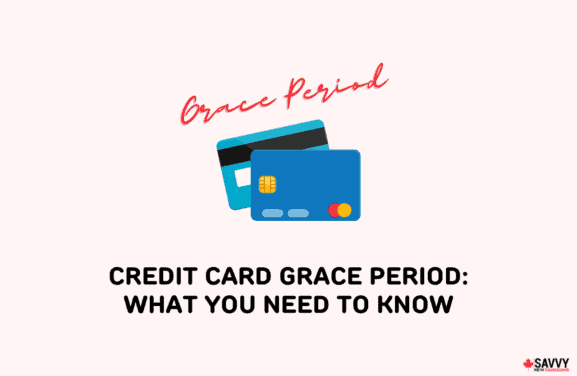

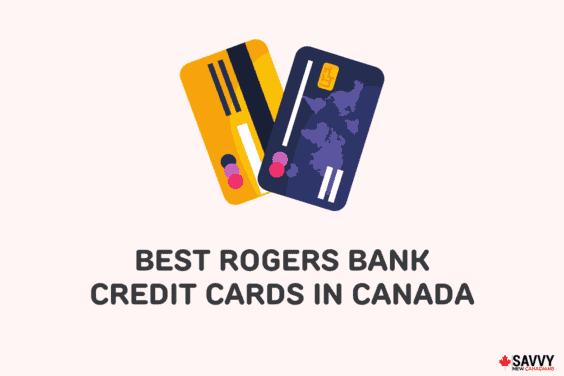
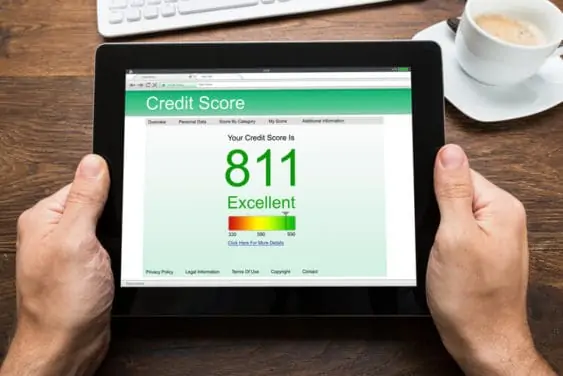
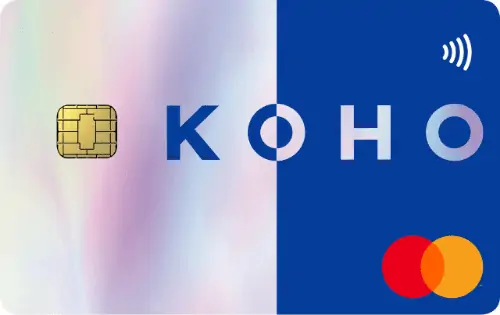
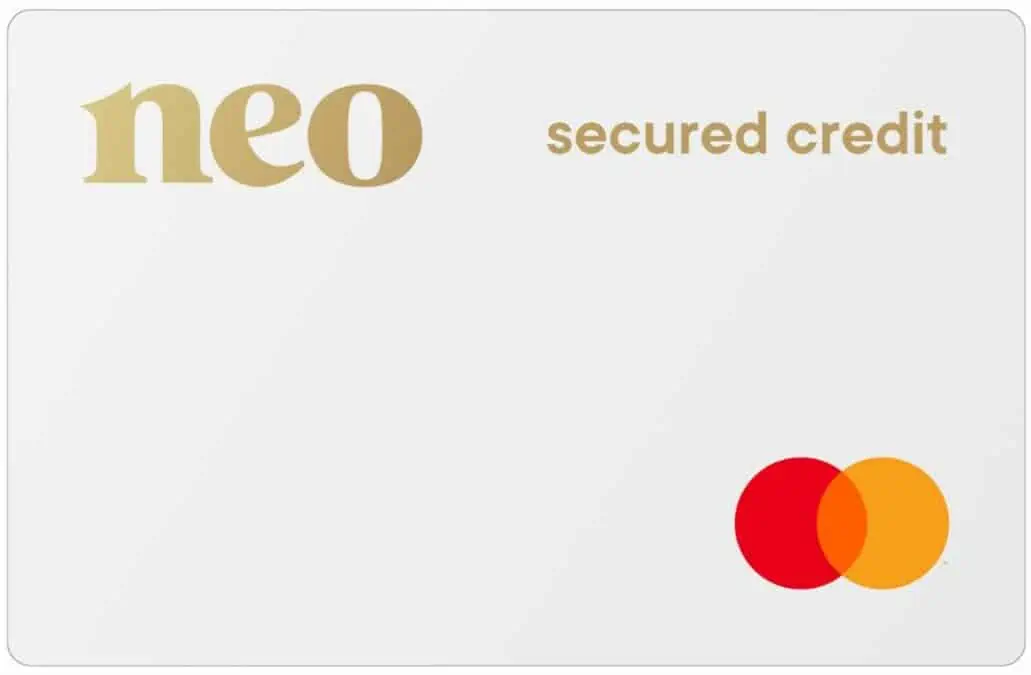
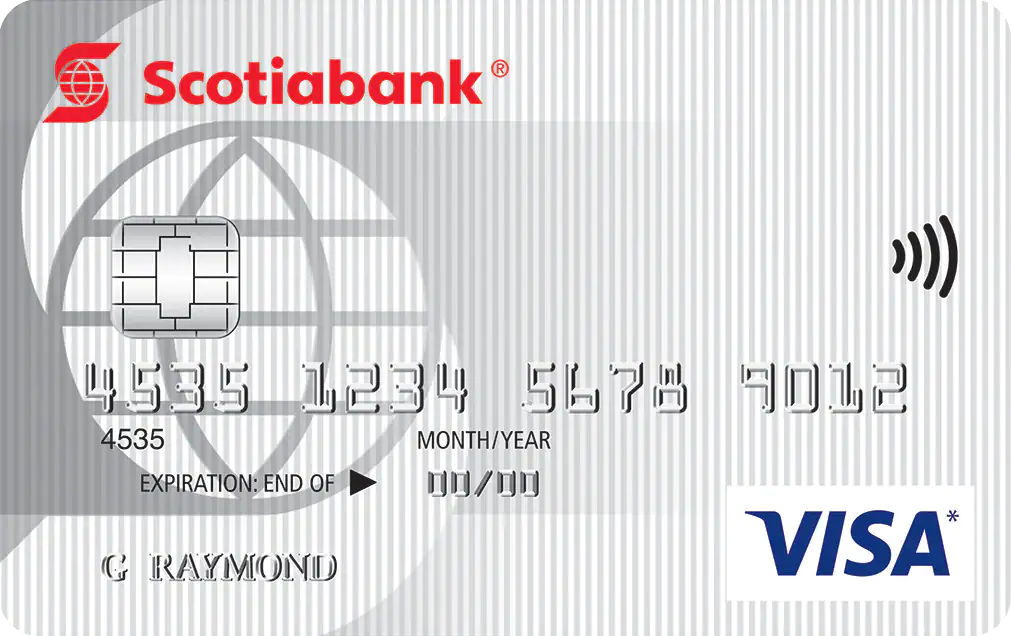
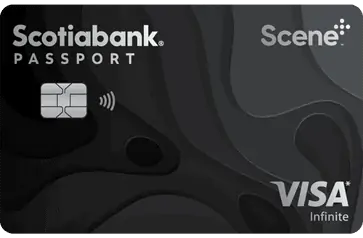
Good article. One suggestion however. The Balance Transfer fee is one of the most important pieces of information when considering a balance transfer, yet you do not highlight this information in the table or in the bullet list for each card. This is make or break information and should be displayed more prominently in the review.
@Biff: The balance transfer fees and other important features are now included for each credit card.